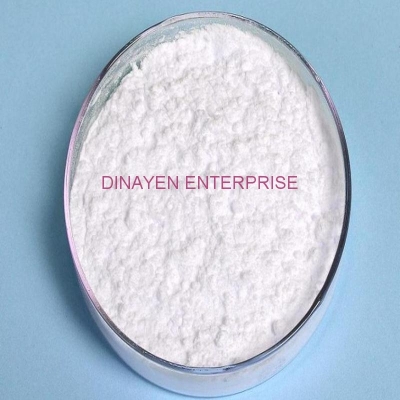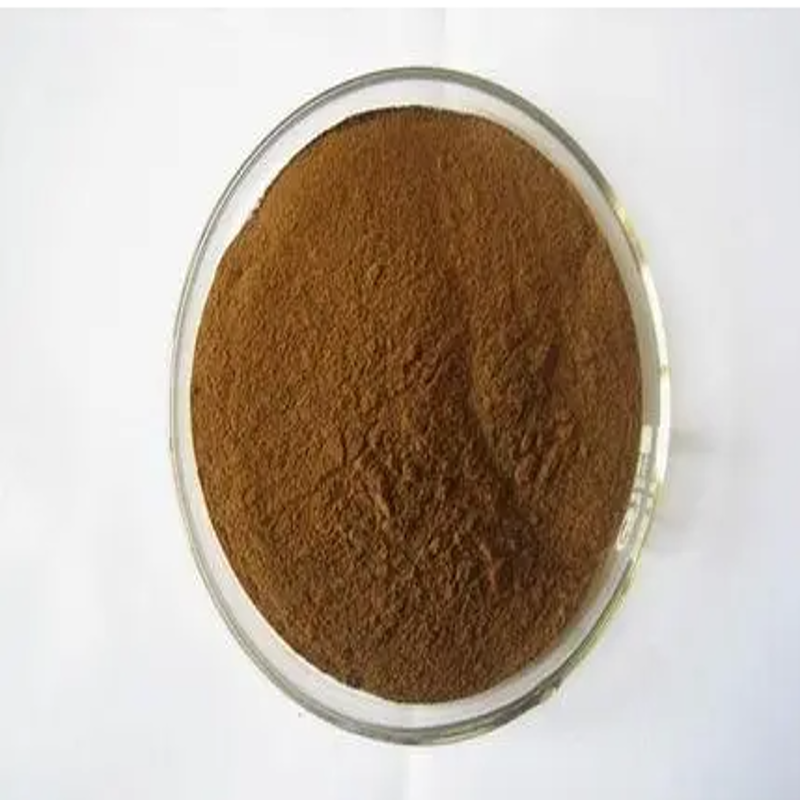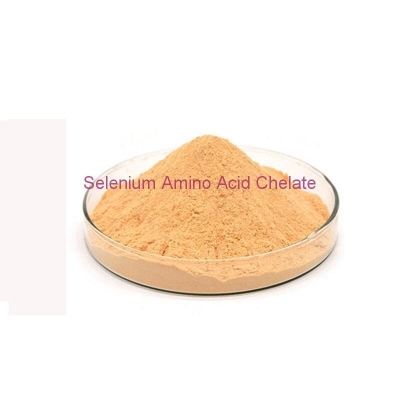How meat should be eaten - analysis of the relationship between meat and health.
-
Last Update: 2020-10-24
-
Source: Internet
-
Author: User
Search more information of high quality chemicals, good prices and reliable suppliers, visit
www.echemi.com
The World Health Organization's International Agency for Research on Cancer (IARC) report of October 26th on the adum-evidence of the relationship between processed meat and red meat and certain cancers in humans is like a bombshell, once again blowing up the debate about meat.The 2015 Dietary Guidelines for Chinese Residents of the Chinese Nutrition Society revised the Food and Health Evidence Group of the Committee of Experts to collect a large number of scientific literatures from 1997 to 2015 on the research of people at home and abroad, and based on the evidence evaluation methods and standards recommended by the World Health Organization (WHO), carried out a summary analysis and evaluation of "the relationship between red meat and health, red meat and its pickled processed meat products and tumors", and the main conclusions and recommendations are presented below for the general reader's reference.. First, processed and unprocessed red meatred meat generally refers to mammalian meat, because the muscle color is dark, dark red, so called "red meat." Corresponding to red meat is white meat, including poultry and aquatic products. The red meat we eat more on a daily basis is pork, beef and lamb, which is what we usually call animal meat.red meat is rich in high-quality protein, fatty acids, vitamins and minerals, and has a high digestion and absorption rate, which has a greater contribution to the improvement of dietary nutrition. However, red meat is high in fat, and excessive consumption carries corresponding health risks. Research data show that excessive intake of red meat can increase the risk of all-cause death, type 2 diabetes and colorectal cancer in men, according to the WHO analysis and evaluation method, the credibility level is strong (B grade).. How much meat did we eat?
according to data released in the China Residents Nutrition and Health Survey, the intake of livestock meat (per standard person) in China was 64.7g/day in 2002, compared with 75g/day in 2012, with a clear upward trend." The impact of high protein, high fat and high energy "three high" diets on the national health of western developed countries has also sounded the alarm. The recently released report on nutrition and chronic diseases among Chinese residents shows that although the overall physical condition and nutritional development have improved, the problem of overweight and obesity in China is prominent, and the overall prevention and control situation of chronic diseases is still serious., maintaining a balanced diet remains at the heart of our efforts to get healthy nutrients from our meat while avoiding the health risks of excessive intake.. 3. Is eating meat carcinogenic?
the relationship between meat and health has a long history and has attracted great attention in recent years based on the results of large population cohort studies. The Food and Scientific Evidence Group of the Committee of Experts on Dietary Guidelines in China has been conducting evidence-based studies since early 2014 and has obtained basically consistent results from the WHO Cancer Research Institute based on an analysis of the 1997-2014 scientific literature.. 1. Excessive intake of red meat
colorectal tumors may increase the risk of colorectal cancer. The evidence includes nearly a hundred studies of population cohorts and clinical trials. The study found that animal meat intake increased the risk of colorectal cancer, with a comprehensive rating of B.. A meta-analysis of 21 studies in 2013 (populations from Europe and the United States) found that 5 cohort-nest case control studies had samples of 92,054 and 2,757 cases of colorectal cancer. Compared with those who did not eat red meat, the risk of colorectal cancer increased by 24% per day, and the dose response relationship analysis found that for every 100 g of red meat intake per day, the risk of colorectal cancer increased by 36%. A cohort study of 300,948 women aged 50-71 in the United States showed an 18% and 24% increased risk of colorectal cancer in people who ate 42.3g/1000 kcal and 66.5g/1000 kcal, respectively, compared to 8.9g/1000 kcal of red meat. In 80,658 Japanese people (45-74 years of age), a cohort study of the risk of red meat and colorectal cancer showed a 48 percent increased risk of rectal cancer in women who ate 93 g of livestock per day compared to 14 g of animal meat per day. However, two other cohort studies and one case-control study found that animal meat intake was not associated with the risk of colorectal cancer.. 2. The processing of meat and cancer
is an effective means of preserving vegetables and meat in the early stages, and today, marinating has changed from simple food preservation to flavor food processing techniques. There is a wide variety of pickled foods, but the content of N-nitro compounds (carcinogens) increases during the marinating process. Early studies found that the areas with high nitroamine content in dietary Central Asia were areas with high incidence of esophageal cancer, and the consumption of cured meat, fish, etc. significantly increased the risk of nasopharyngeal cancer, and there was a dose effect relationship, the higher the risk of ingestion frequency. This paper analyzes the relationship between pickled foods (intake) and esophageal cancer, stomach cancer and breast cancer by searching relevant literature at home and abroad.. 1) Pickled food and esophageal cancer
food can increase the risk of esophageal cancer. Eighty Chinese from a group of patients found that ingesting pickled foods was a risk factor for esophageal cancer. A case-control study of 548 patients aged 42 to 89 Chinese found that patients with esophageal cancer were 1.38 times more likely to eat cured fish than the normal population. A 2013 study of 456 esophageal cancer patients (average age 61.76 years) and 912 normal control cases (average age 60.09 years) found that 2.265 times as many people with esophageal cancer ate pickled food. Comprehensive findings suggest that eating more pickled foods may increase the risk of esophageal cancer.. 2) Pickled food and stomach cancer
eating more pickled food can increase the risk of stomach cancer. A total of 12 documents were collected, 1 of which a systematic review concluded that pickled foods increased the risk of stomach cancer and were highly relevant among Chinese and Korean populations. Another cohort study and six case-control studies found that pickled foods increased the risk of stomach cancer, while one cohort study and three case-control studies found that pickled foods were not associated with stomach cancer. A systematic review from South Korea (6 studies), China (29 studies), Japan (13 studies) and other countries (12 studies) found a significant association between the intake of pickled vegetables in the Chinese and Korean populations and the incidence of stomach cancer, with 1.52 times as much as those who ate pickled vegetables in patients with stomach cancer. A case-control study conducted in Anhui, China, in 2005 concluded that the risk of stomach cancer from cured meat intake increased 5.19 times compared to those who ate more than 2.80 kg of cured meat per year. Comprehensive findings suggest that pickled foods may increase the risk of stomach cancer.. 3) Pickled foods and breast cancer
more pickled foods can increase the risk of breast cancer. A total of 11 case-control studies were collected, 8 of which concluded that pickled foods increased the risk of breast cancer. A 2014 study of 604 breast cancer patients and 604 control groups in Guangxi, China, found that 2.13 times as many breast cancer patients ate pickled food as the control population. A 2009 study of people aged 25 to 70 in Jiangsu, China, found that those who ate more than 0.25 kg of cured meat per year had a 4.71-fold increased risk of breast cancer compared to those who did not eat cured meat. Comprehensive findings suggest that pickled foods may increase the risk of breast cancer.
, ingesting pickled foods can increase the risk of esophageal, stomach and breast cancer. . Four, in the end how to eat meat? . 1. Moderate but not excessive
The Dietary Guidelines for Chinese Residents recommend that healthy adults consume no more than 75 grams of livestock and poultry meat per day on average under the ideal dietary model. Usually we eat a large row, a chicken leg weight is between 100-150g, remove the bone after the edible part is basically between 70-100g. It is important to maintain a balance for a period of time and to make vegetables and cereals a major part of a day's diet. Doing the right amount requires a little planning "quantification", which is easy to implement when familiar. (1) make a recipe for yourself or your family and plan your meat properly. To arrange animal food reasonably in each meal, that is, not to concentrate on excessive consumption.
(2) as far as possible to control the size of the ingredients, become "big" to "small", not only to meet the desire of the mouth, but also to ensure food diversification.
(3) go out less and eat more at home and in the canteen. Eating out often leads to excessive meat intake, which can be replaced by fish and soy products. . 2. Diversification of animal foods
According to the data of the current National Nutrition and Health Survey, the average daily intake of livestock and poultry meat per person in China has actually exceeded the recommended value of the ideal dietary pattern of the Dietary Guidelines for Chinese Residents, and there is a gradual upward trend. The intake of livestock and poultry meat is mainly livestock meat, and in livestock meat, the intake of pork is the highest. Compared with red meat, the fatty acid composition of poultry meat contains lower content of saturated fatty acids. Therefore, we suggest that we should adjust the proportion of livestock and poultry meat and not ing only eat livestock meat. . 3. Reasonable cooking, pick "thin" to "fat
it is best to use steaming, cooking, stewing, steaming and frying methods, less use of burning, frying, roasting, frying and so on. When roasting and frying, due to the high temperature, nutrients in food can not only be destroyed, but also produce some carcinogenic compounds contaminated food, affecting human health. In addition, frying can increase the fat content of food, resulting in increased intake of fat.
pick "thin" to "fat" good. Fat meat, especially animal meat, high fat content, excessive intake is often obesity, cardiovascular disease and some tumor risk factors, lean meat fat content is low, mineral content is rich, absorption utilization rate is high, so should choose to eat lean meat, eat less fat. . 4. What do you think of processed meat products?
The World Health Organization's International Agency for Research on Cancer has classified evidence of cancer hazards from processed meats as a level 1 based on a comprehensive assessment of literature, which means that there is sufficient evidence of their carcinogenicity to humans. The forthcoming Dietary Guidelines for Chinese Residents (2015 edition) also assess the relationship between smoked meat and health, and excessive intake of smoked bacon is likely to increase the risk of stomach and esophageal cancer (credible level B). . China's residents often eat processed meat products are bacon, bacon, ham, sausage and so on. Why processed meat products will have such a hazard, its processing methods, time treatment, etc. may be the key. Although more research is needed to explain the correlation, the use of nitrites, smoking processes, etc. may play an important role in this as far as we know. Nitrites themselves are not carcinogenic, but when combined with amines broken down by proteins in meat, they produce the carcinogen nitro compounds. Smoked foods contain more than 200 compounds, some of which have been shown to have carcinogenic effects, such as polycyclic aromatic hydrocarbons, which can contaminate food during the smoking process, thereby increasing the risk of cancer in the human body. . 1) Advocating eating less
, eating pickled and smoked meat has a risk of cancer, does not mean that you eat processed meat products will get cancer. This risk is closely related to the amount of food consumed, the duration of time, etc. , but there is no definite results to show how much to eat is safe. So eating less can lead to more health benefits, like the "smoking is bad for your health" tip. To let consumers understand the possible harm and to be able to guide the rational choice of food, is our greatest protection of consumer health. . 2) Learn to look at the label
most of the processed meat products are prepackaged food, according to our national regulations, prepackaged food labels must have "ingredients list" and "food ingredients list", you can see the relevant information on it. Therefore, for consumers, in addition to the purchase of food on the label of the production date and shelf life, but also learn to look at the "ingredients list" and "food ingredients list", so as to clearly consume. . Learn food nutrition and food safety knowledge, understand the importance of a reasonable diet to health, so that food variety, eating balance, in order to get the greatest health benefits from meat. we have always stressed "food variety", and meat is an important part of a reasonable diet, the key is how to eat meat. . The Dietary Guidelines for Chinese Residents (2007 edition) recommend eating the right amount of fish, poultry, eggs and lean meat, and we will also give Chinese residents more appropriate explanations and suggestions in the revision of the Dietary Guidelines for Chinese Residents (2015 edition). . Guo Junsheng Ma Patriotic Guo Hongwei Wang Xiaoli Wang Jingjun
China Residents Dietary Guidelines Revision Committee
China Nutrition Society November 2015 .
This article is an English version of an article which is originally in the Chinese language on echemi.com and is provided for information purposes only.
This website makes no representation or warranty of any kind, either expressed or implied, as to the accuracy, completeness ownership or reliability of
the article or any translations thereof. If you have any concerns or complaints relating to the article, please send an email, providing a detailed
description of the concern or complaint, to
service@echemi.com. A staff member will contact you within 5 working days. Once verified, infringing content
will be removed immediately.







